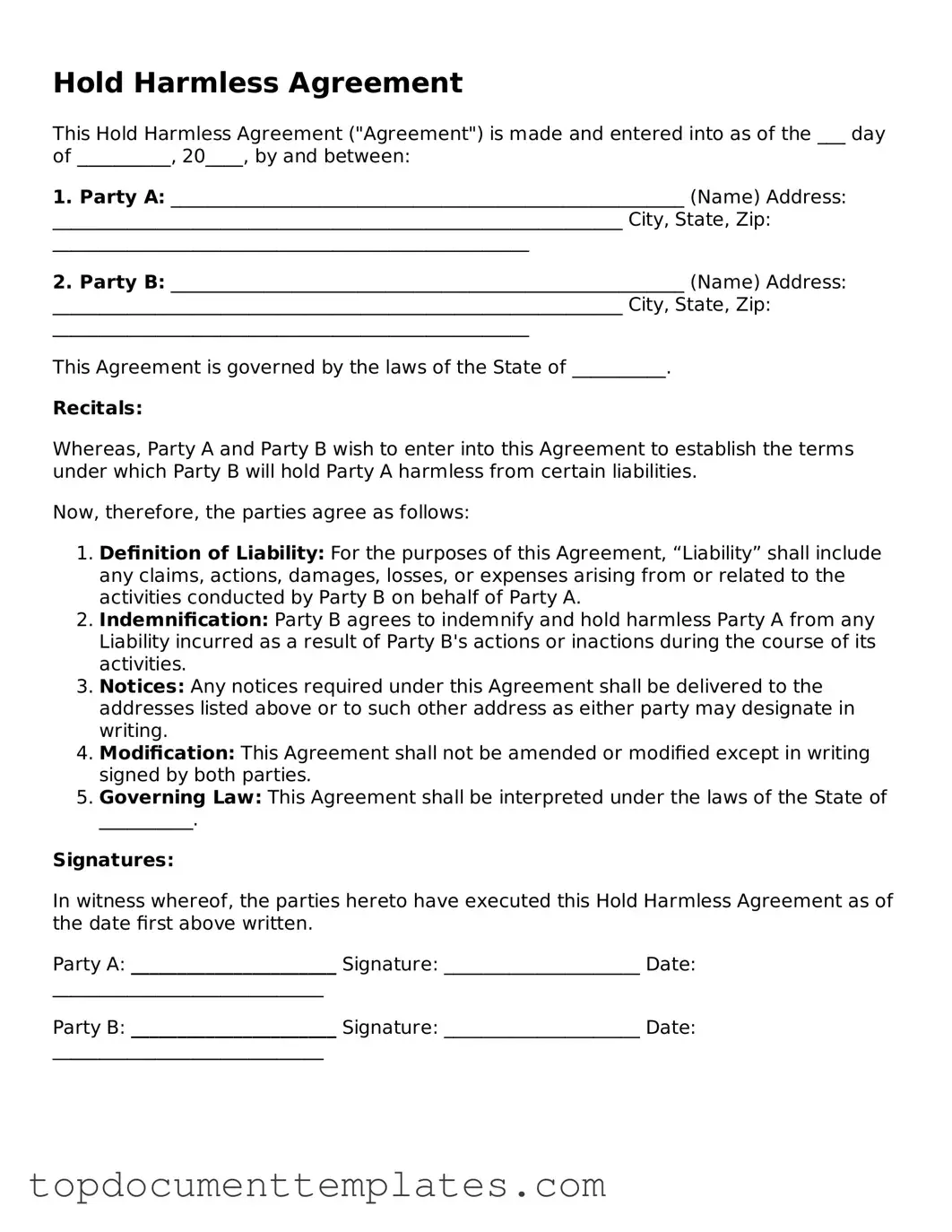Official Hold Harmless Agreement Template
A Hold Harmless Agreement is a legal document designed to protect one party from liability or claims that may arise from specific activities or events. By signing this agreement, individuals or organizations agree not to hold each other responsible for any potential damages or injuries. Understanding the implications of this form is crucial for anyone involved in activities where liability could be a concern.
To ensure you are adequately protected, consider filling out the Hold Harmless Agreement form by clicking the button below.
Open This Form
